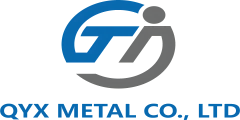The special properties of titanium alloys make it an increasingly popular field of application. High strength/weight ratio, excellent toughness and excellent corrosion resistance make titanium alloys suitable for medical implants, golf club heads and military armor.
However, the turning of titanium alloy parts is very difficult, which makes the mechanical craftsmen daunting. They believe that the super performance of titanium alloy greatly weakens the machinable “ability” and makes the cutting process extremely challenging. Although this view makes sense, it is not comprehensive. This article explores the turning strategy of titanium alloys and will help mechanical craftsmen to process difficult-to-machine materials such as racing parts, underwater breathing apparatus, and new cutting techniques.
Bill Headland, a senior project specialist at RTI International Metals, a titanium alloy manufacturer, points out that although many processing plants treat titanium alloy processing as a fearful way, titanium alloys actually include a wide range of products. You must understand that what you are processing is Which kind. Titanium alloys have many grades, some of which are difficult to machine, while others are not. Commercial pure titanium (CP grade) is a non-alloy material commonly used in the manufacture of medical parts, heat exchangers and eyeglass frames. CP grades have excellent corrosion resistance and are relatively easy to process. However, compared with other titanium alloys, its strength is very low, and it is sticky and soft.
After the addition of the alloy to pure titanium, the crystal phase (crystal structure) is changed, and the properties and machinability of the material are also changed. The α-titanium alloy and the quasi-α titanium alloy contain additives such as nickel, aluminum, and vanadium. The machinability of these intermediate grades of titanium alloys is quite good. Alpha-beta titanium grades may contain more aluminum and vanadium. The industrial mainstream titanium alloy Ti6Al4V is an α-β titanium alloy grade containing about 6% aluminum and 4% vanadium. Ti6Al4V and its variants account for about 50%-70% of the titanium alloys currently used.
A beta grade titanium alloy with iron, chromium and other ingredients added is one of the most difficult grades to process. Due to its high fracture toughness and excellent resistance to high cycle fatigue, the mechanical properties of the beta grades are similar to Hastelloy's nickel-based alloys and similar materials. A typical application example is the manufacture of lightweight springs for triggering underwater launch tactical missiles. Foldable tail.
Various titanium alloys exhibit different cutting properties. Some people think that the time required to machine a Ti6Al4V workpiece is usually three times that of a steel piece. Some people say that it takes twice as long to machine a Ti6Al4V workpiece to machine a Ti5553.
In turning, the most important characteristic of titanium alloys is poor thermal conductivity. Since the high temperature generated during cutting is difficult to be absorbed by the workpiece and accumulates on the cutting edge of the tool, excessive heat causes a chemical reaction between the cutting edge and the chip and causes crater wear.
Titanium alloys also have a tendency to work harden, so it is important to remove the metal by shear rather than extrusion. In addition, although titanium alloys have high strength, they also have a low modulus of elasticity, which means that titanium alloys are relatively more elastic and easier to leave the cutting edge than other materials (especially in light load cutting). Time). Taking into account these characteristics of titanium alloys, in order to successfully achieve the turning of titanium alloys, the key is to achieve a balance between cutting speed, feed rate and depth of cut.
Cutting speed is the primary factor affecting the generation of cutting heat. Stefan Gyllengahm, a turning specialist at Sandvik Coromant, spent three and a half years developing tool grades for tool manufacturers. During this time, he performed a Ti6Al4V cutting test in the laboratory. The results showed that the cutting speed must be chosen with great care: in some cases, when the cutting speed is increased by 10%-15%, the tool life will drop from 40 pieces. For 6 pieces, this indicates that the cutting speed is adjusted too much. He also found that when turning at a cutting speed that does not shorten the tool life, if the feed rate is increased, a critical temperature that is detrimental to the tool life is reached because there is a limit range of excessive heat.
Next page
